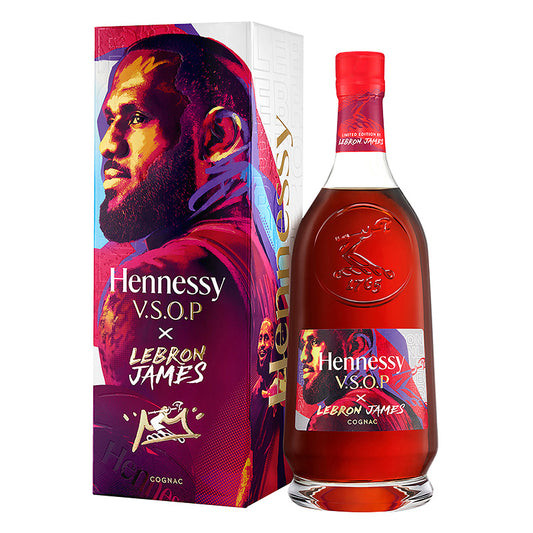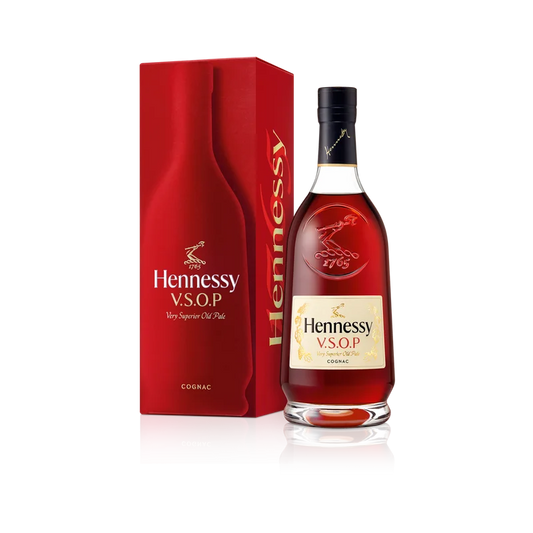
See our range of
Brandy
-
Martell VS 700ml
Regular price $89.99 NZDUnit price per0% OffRegular price -
De Valcourt Brandy 1L
Regular price $57.99 NZDUnit price per0% OffRegular price -
Martell VSOP 700ml
Regular price $109.99 NZDUnit price per0% OffRegular price -
Hennessy VSOP x Lebron James
Regular price $119.99 NZDUnit price per0% OffRegular price -
St-Rémy XO Extra Old French Brandy 700ml
Regular price $59.99 NZDUnit price per0% OffRegular price -
Hennessy VS NBA Edition 700ml
Regular price $95.99 NZDUnit price per0% OffRegular price -
St-Rémy VSOP 1l
Regular price $70.99 NZDUnit price per0% OffRegular price -
Hennessy Xo 700ml
Regular price $439.99 NZDUnit price per0% OffRegular price -
Hennessy VSOP 700ml
Regular price $132.99 NZDUnit price per0% OffRegular price -
Hennessy Vs 700ml
Regular price $87.99 NZDUnit price per0% OffRegular price -
Chatelle Brandy 1l
Regular price $63.99 NZDUnit price per0% OffRegular price
Your Guide to Shopping For Brandy: History, Types and Brands.
Brandy is a timeless spirit enjoyed across the globe, known for its rich flavours and warm characteristics. Whether sipped neat, enjoyed in cocktails, or used in cooking, brandy has a unique position in the world of fine spirits. Derived from the distillation of wine or fermented fruit juice, brandy is a drink that has stood the test of time, admired for its versatility and complexity. In this article, we’ll delve into the history, production process, types, and brands of brandy, offering you a comprehensive guide to understanding this iconic spirit.
What is Brandy?
Brandy, at its core, is a distilled spirit made from fermented fruit juice or wine. Traditionally, the most common base is grape wine, though other fruits such as apples, pears, and peaches are also used to create fruit brandies. Brandy is typically aged in wooden casks, which impart rich flavours and colour to the spirit. The name “brandy” is derived from the Dutch word "brandewijn," meaning "burnt wine," which refers to the heating process used during distillation.
Brandy can range in strength, but most versions hover around 35-60% alcohol by volume (ABV), making it a strong yet smooth spirit that is often enjoyed as a digestif after meals.
The Fascinating History of Brandy
The origins of brandy can be traced back to the early methods of wine preservation in the 15th century. Dutch merchants were among the first to distil wine in an effort to preserve it during long sea voyages. Initially, the idea was to add water back to the distilled wine upon arrival at its destination. However, they found that the distilled product was enjoyable as it was, leading to the birth of brandy.
The spirit’s popularity grew quickly, and by the 17th century, France had become a major hub for brandy production, particularly in the regions of Cognac and Armagnac. Brandy eventually spread across Europe and beyond, becoming a staple in many cultures, often associated with luxury and sophistication.
Today, the production of brandy continues worldwide, with variations depending on the local fruits and ageing techniques used. From the fine Cognacs of France to the distinct flavours of American apple brandy, the global appreciation for brandy remains as strong as ever.
The Different Types of Brandy
Brandy comes in many forms, each with its own unique character. Understanding the different types can help you better appreciate the nuances of this spirit. Here are the most notable types of brandy:
a) Cognac
Cognac is perhaps the most famous and prestigious type of brandy. It is produced exclusively in the Cognac region of France and follows strict regulations to ensure its quality. Cognac is double distilled in copper pot stills and aged in French oak barrels. The result is a complex and refined spirit with flavours of dried fruit, vanilla, and oak.
b) Armagnac
Armagnac is another highly regarded brandy from France, produced in the Gascony region. Unlike Cognac, Armagnac is distilled only once in a column still, giving it a more robust and rustic flavour. It is often enjoyed neat due to its depth and rich, earthy tones.
c) American Brandy
While France dominates the world of fine brandy, the United States, particularly California, is also known for its American brandy. Typically made from wine grapes, American brandy tends to be less regulated than its French counterparts, resulting in a diverse range of flavours and styles.
d) Fruit Brandy
This category includes brandies made from fruits other than grapes. Apple brandy (such as Calvados from France), pear brandy, and plum brandy (like Slivovitz from Central Europe) are popular examples. These brandies are often more fragrant and lighter in taste compared to grape brandies.
e) Pisco
A South American variety, Pisco is a brandy made from specific types of grapes grown in Chile and Peru. It is typically unaged, resulting in a clear, potent spirit with fruity and floral aromas.
Top Brandy Brands You Should Know
If you’re looking to explore brandy, here are some of the most notable brands available today:
a) Hennessy
One of the most famous Cognac brands in the world, Hennessy is renowned for its smooth, luxurious Cognacs, ranging from VS (Very Special) to XO (Extra Old).
b) Rémy Martin
Another powerhouse in the Cognac world, Rémy Martin specialises in Cognac made from grapes grown exclusively in the Grande Champagne and Petite Champagne regions of Cognac. Their Cognacs are known for their deep flavour and exceptional smoothness.
d) Courvoisier
Courvoisier is another historic Cognac brand, known for its elegant and well-balanced Cognacs. It was famously favoured by Napoleon Bonaparte, adding to its luxurious appeal.
How Brandy is Made: The Production Process
The production of brandy involves several key steps, starting with fermentation and ending with ageing in barrels. Here’s a closer look at how it’s made:
a) Fermentation
Brandy begins with the fermentation of fruit juice. For grape brandy, wine is the starting point, while fruit brandy begins with the fermentation of fruit mash or juice. Yeast is added to convert the sugars in the juice into alcohol.
b) Distillation
The fermented liquid is then distilled to concentrate the alcohol and flavours. Most brandies are distilled using a pot still, though some use column stills. Cognac and Armagnac, for example, use pot stills, resulting in a more robust and aromatic spirit.
c) Ageing
After distillation, the brandy is aged in wooden barrels, typically made of oak. The ageing process allows the spirit to develop rich flavours of vanilla, caramel, and spice. The length of ageing varies by type, with some brandies aged for decades.
d) Blending
For certain types of brandy, like Cognac, blending is an important step. Master blenders mix different barrels to create a consistent product with the desired flavour profile.
How to Enjoy Brandy: Tips and Cocktails
Brandy can be enjoyed in various ways, from sipping it neat to mixing it in cocktails. Here are a few options:
• Neat or On the Rocks: For high-quality brandies like Cognac or Armagnac, it’s best to enjoy them neat or with a little ice to fully appreciate their complexity.
• Brandy and Ginger Ale: A refreshing and simple combination of brandy and ginger ale over ice.
• Sidecar: This classic cocktail mixes brandy, Cointreau, and lemon juice for a tangy and smooth experience.
• Brandy Alexander: A creamy cocktail made with brandy, crème de cacao, and cream – perfect for after-dinner indulgence.
FAQs About Brandy
1. What’s the difference between Cognac and brandy?
o Cognac is a type of brandy made in the Cognac region of France, following strict production rules.
2. Is all brandy aged?
o Most brandies are aged, but some, like Pisco, are unaged, giving them a clear appearance and fresh flavour.
3. What is the best way to drink brandy?
o High-quality brandies are best enjoyed neat, while others can be used in cocktails or enjoyed with mixers.
4. Can you cook with brandy?
o Yes, brandy is often used in cooking to deglaze pans, create sauces, or add depth to desserts.
5. Does brandy improve with age?
o Once bottled, brandy does not continue to age. However, the time spent ageing in barrels before bottling greatly impacts its quality.
6. What are the main differences between Cognac and Armagnac?
o Cognac is double-distilled in pot stills, while Armagnac is distilled once in column stills, resulting in a more robust flavour.
7. Is brandy gluten-free?
o Yes, brandy is naturally gluten-free, as it is distilled from fruits or wine.
8. What makes fruit brandy different from grape brandy?
o Fruit brandy is made from fermented fruits other than grapes, such as apples, pears, or plums, offering distinct flavours.
9. Can brandy go bad?
• Unopened brandy has an indefinite shelf life. Once opened, it’s best consumed within a few years to retain its flavour.

Select Your Region
- Choosing a selection results in a full page refresh.
- Opens in a new window.





















